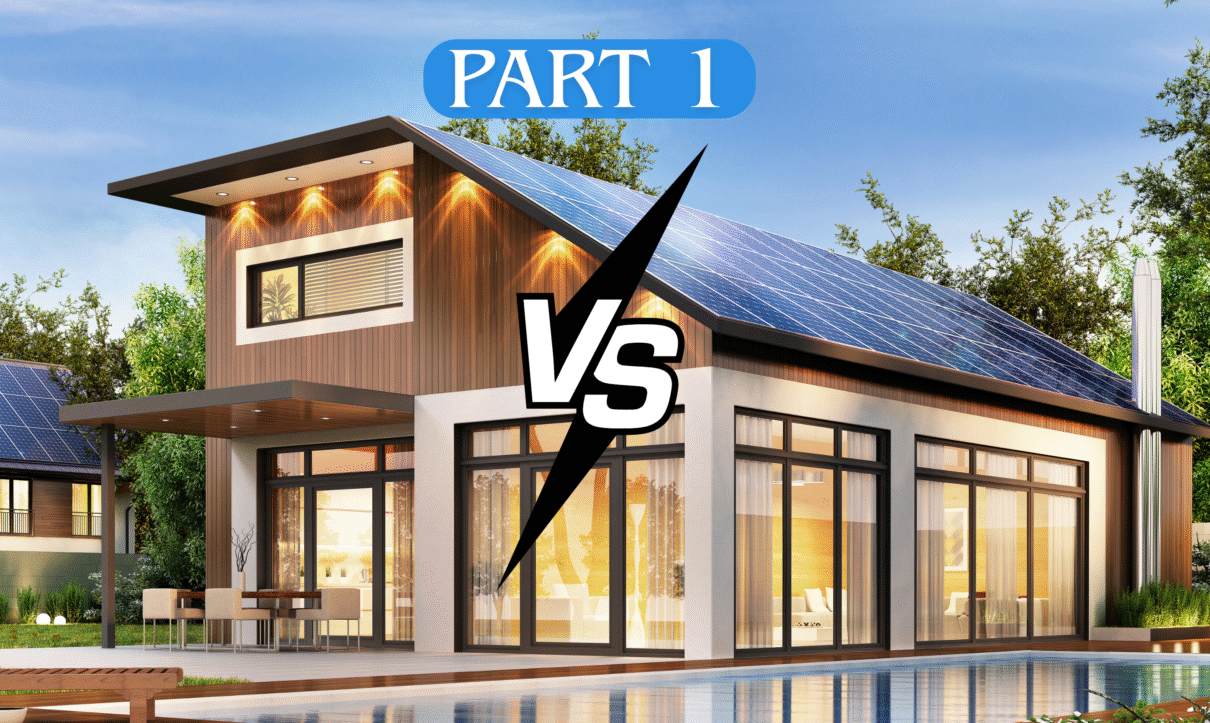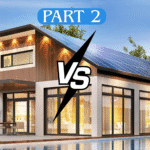Solar loan vs solar lease: safer, smarter, lower-risk financing (2025)
Solar loan vs solar lease can look similar when the monthly payment is the same, but the long-term results are very different. This guide explains ownership, incentives, resale, maintenance responsibilities, and what happens if a bank or leasing company is sold or goes bankrupt—so you can choose the option with fewer surprises.
Note: This article is general information, not financial or tax advice. Review IRS Form 5695 for the federal credit and speak with a tax professional for your situation.
Quick answer
- Loan: You finance and own the system. You typically keep the 30% federal tax credit and any local incentives. You control service decisions and, after payoff, enjoy years of low-cost power.
- Lease/PPA: You rent the system for ~25 years. The finance company usually keeps the incentives and remains responsible for performance and maintenance under contract.
When payments are similar, ownership through a loan tends to be the better long-term value for most homeowners. A lease can still make sense in specific situations (see below).
Ownership, performance & incentives
With a loan, the panels become your asset. Modern PV modules are designed for decades of service; see the basics from energy.gov. Loan customers usually claim the federal Residential Clean Energy Credit (commonly 30% of eligible costs) using IRS Form 5695 and may stack state or utility incentives. A useful overview is maintained by SEIA.
With a lease/PPA, the finance company typically takes the tax credit and incentives in exchange for offering you a set energy rate or lease payment. Many leases include production monitoring and performance guarantees—handy if you want a “hands-off” experience.
Risk if the bank or company is sold or goes bankrupt
- Loan: If your lender sells or transfers servicing, your contract terms generally stay the same and you keep making payments to the new servicer. See the CFPB’s guidance on loan/servicing transfers: consumerfinance.gov.
- Lease/PPA: If the leasing company is acquired or enters bankruptcy, your lease is usually sold as an asset. Payments continue, but customer service, maintenance responsiveness, or buyout policies can change with the new owner. You remain bound by the contract.
Selling your home
- Loan (you own): Buyers often value owned solar. If a buyer won’t assume a remaining balance, you can pay it off at closing and market the home with a paid-off solar upgrade. Studies (e.g., a 2019 Zillow analysis) have found a price premium in many markets; see Zillow Research for context (premiums vary by location and market conditions).
- Lease/PPA: Buyers must agree to assume the lease. If they don’t, you may need to buy out or remove the system per the contract, which can complicate or delay closing.
Roof work, maintenance, and control
- Loan: You choose the contractor for removal and reinstallation, upgrades, or repairs—full control over schedule, parts, and pricing.
- Lease/PPA: Work typically must be coordinated through the leasing company’s approved vendors and timelines; fees and scheduling are governed by the lease agreement.
If you need a certified removal & reinstall, request a quote here.
Side-by-side risk comparison
| Scenario | Solar Loan (own the system) | Solar Lease/PPA (rent the system) |
|---|---|---|
| Bank sold / servicer changes | Terms stay; you pay the new servicer; ownership unaffected. | Contract transfers; service quality and policies can change. |
| Company bankruptcy | Loan sold as an asset; your ownership remains. | Lease sold as an asset; you’re bound to the new owner’s servicing. |
| Home sale | Buyer can assume or you can pay off; owned solar can aid valuation/marketability. | Buyer must assume; otherwise buyout/removal per contract. |
| Roof replacement | You pick the contractor, timeline, and parts. | Must coordinate with lease provider; fees/contract rules apply. |
| End of term | System is paid off; years of low-cost power remain. | No ownership; options are renew, buy out, or remove. |
| Tax credits & incentives | You typically claim them (see IRS 5695). | Leasing company typically claims them. |
When a lease can still make sense
- Minimal upfront cost / credit constraints: You want lower bills but can’t qualify for a loan or prefer not to take on debt.
- Hands-off maintenance: You prefer the provider to handle monitoring, service, and performance guarantees.
- Shorter expected ownership: You don’t plan to keep the home long and accept the lease transfer/buyout trade-offs.
For background on PPAs, see SEIA’s overview of Power Purchase Agreements.
Bottom line
If monthly payments are similar, a loan is usually the safer, higher-value choice: you own the asset, keep incentives, retain control over service, and avoid lease transfer headaches at resale. A lease can fit specific needs—just be sure you’re comfortable with long-term contractual obligations.



